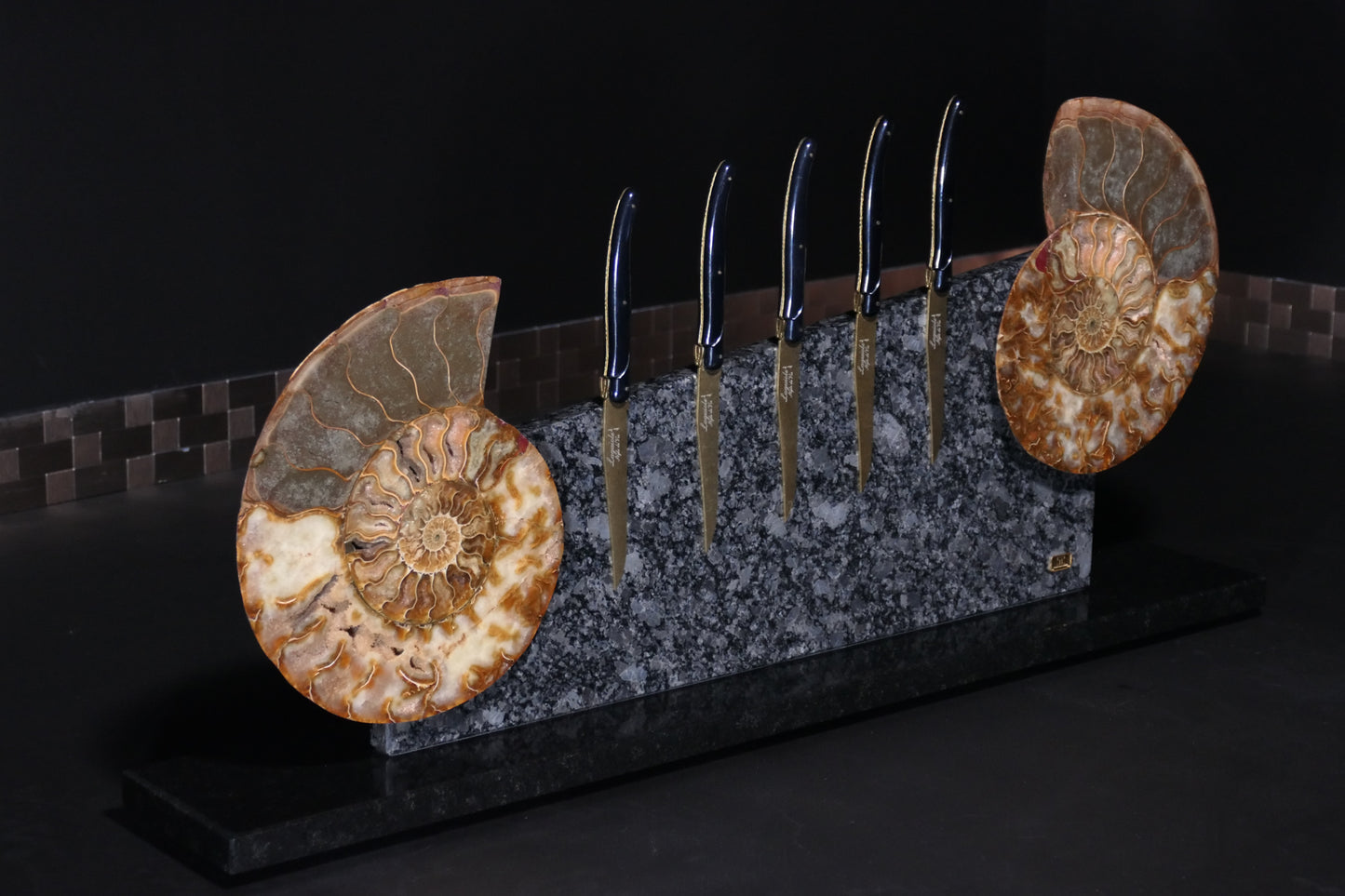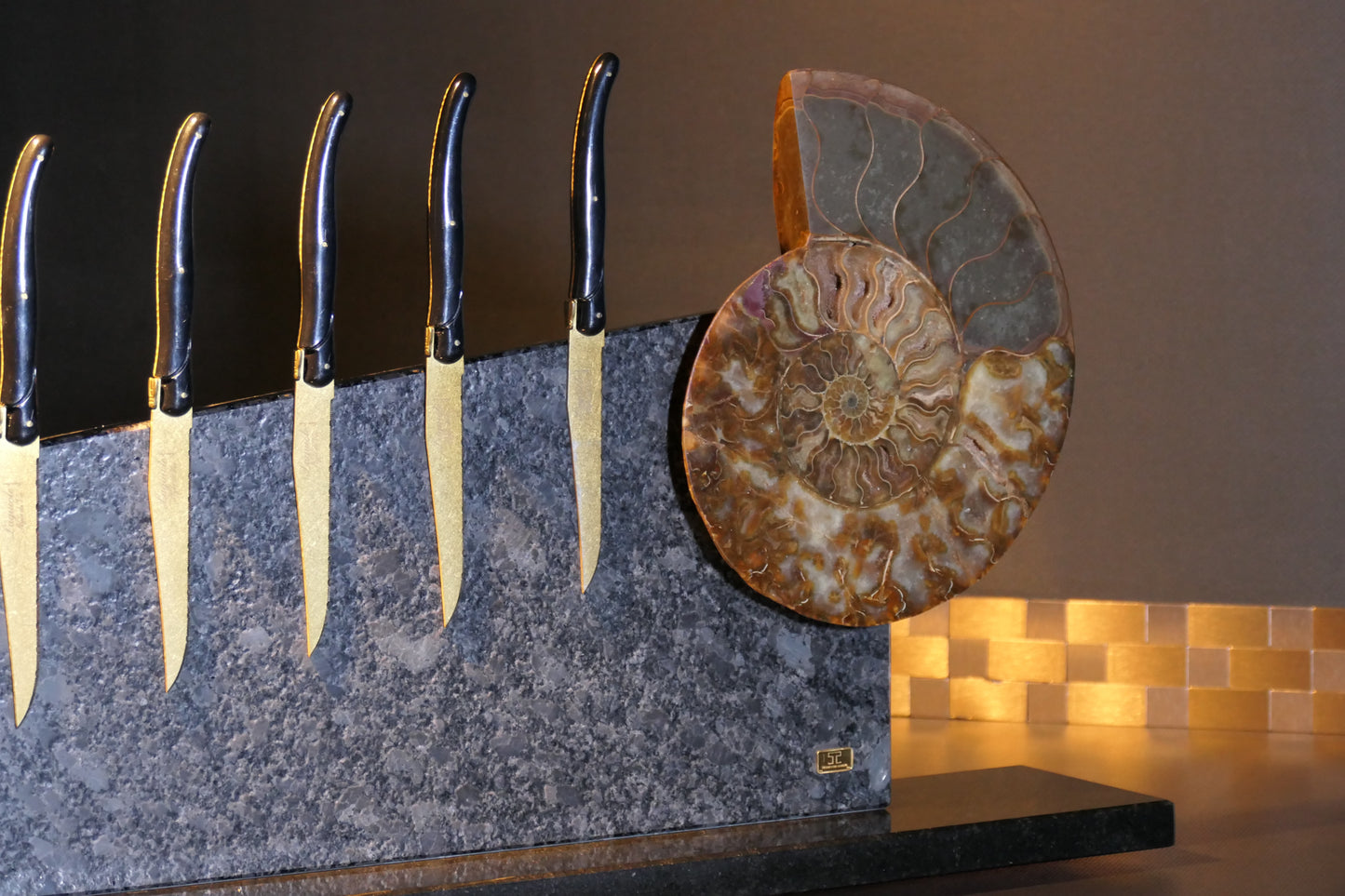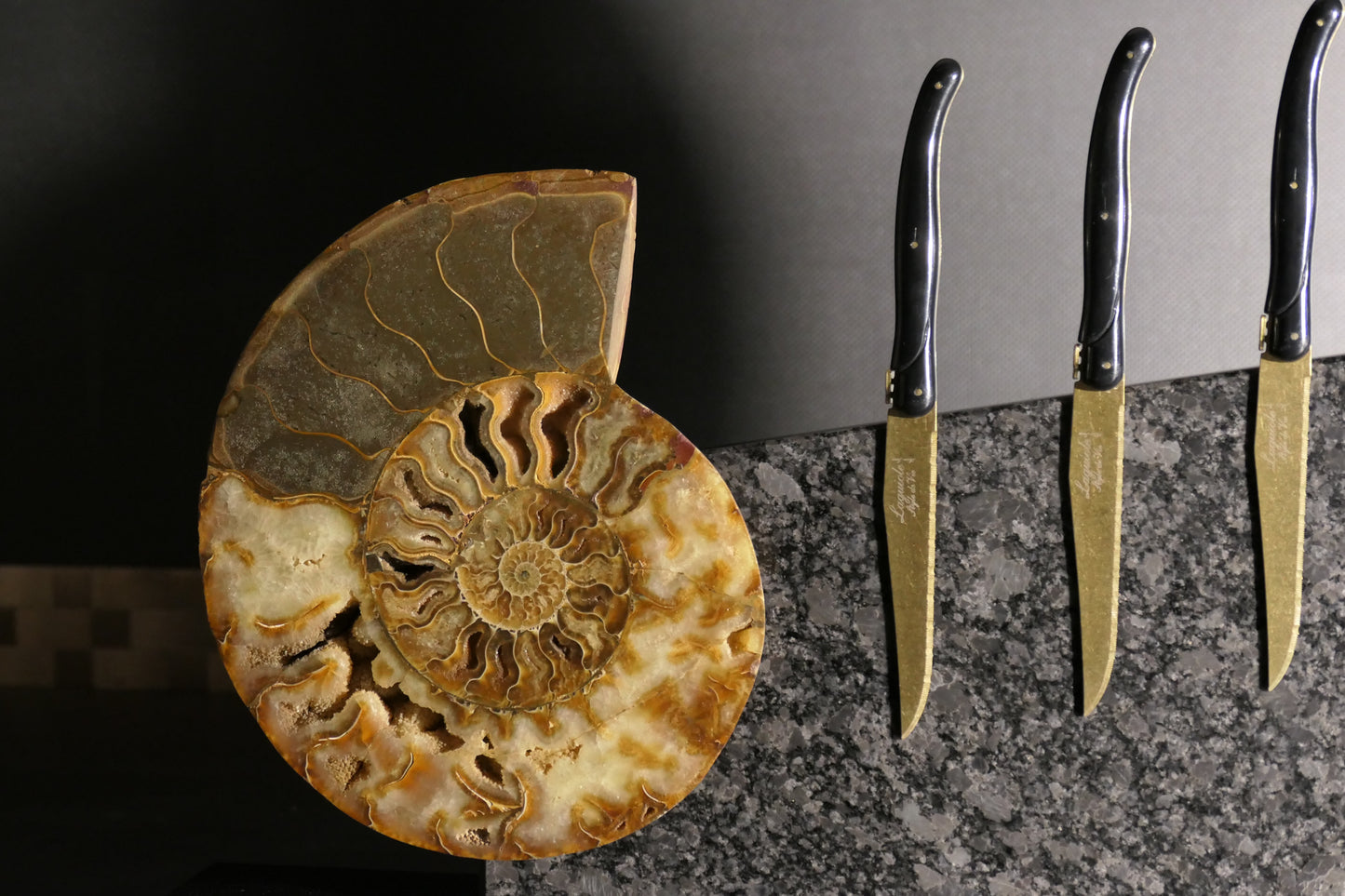Steel Grey knife block with a split ammonite
Steel Grey knife block with a split ammonite
Couldn't load pickup availability
Details
| Stopping places | 5 |
| Weight | 15.30kg |
| Size | Length 81 cm | Width 12 cm | Height 35.5 cm |
| Serial number | TSSFO.004 |
Knife block made of Steel Grey with 2 Ammonite halves
2 halves of an XXL ammonite, positive, negative, from Madagascar. The ammonite was sawn open and both sides of the ammonite discs were ground and polished to a high gloss. This allows the inner workings of the ammonite with its chamber system to be studied very well. The chambers are filled with sediment or full of small mineral crystals, which leads to the beautiful spiral patterns. By cutting and polishing, you can clearly see the chamber system that made it possible to surface and submerge.
| Fossil | Cleoniceras besairiei |
| Location | Madagascar, Mitsinjo, Sitampiky, 100 km SW of Mahajanga |
| formation | Lower Cretaceous, Alb |
| Old | ca.150 million years |
Ammonites are an extinct group of cephalopods that lived in the sea. There were around 40,000 different species, the largest of which grew to two meters. This ammonite was found in Madagascar and dates back to the Lower Cretaceous period. This makes them around 150 million years old. It's just unbelievable... Ammonites became extinct around 65 million years ago, around the same time as the dinosaurs. The shape of their shells resembles a spiral tube. The animals only lived in the end of the tube. The remaining chambers were filled with air and made it easier to sink and rise in the water.
Steel Grey, which is similar to granite, is a steel-grey monzonite rock with a small to medium-coarse grain. The darker areas on the surface are mostly made up of biotite, while the lighter areas are made up of various feldspars. The surface of this stone has a very special surface finish. The satin finish “Lapatura” is brushed and polished. The special thing about this surface is that it is rough and shiny at the same time. Are you wondering how this is supposed to work? TYCOON STONE SCHMIDKE will explain it to you: The natural stone is ground with brushes that have a certain abrasive grain. Technically speaking, the following happens: The softer components of the minerals on the surface, mostly the biotites, are brushed out and deepened during this processing, while the harder minerals such as feldspars and quartz are not removed. The stone is then treated with increasingly finer brushes. In this way, coarse components are removed from the surface and brushed “smooth”. The final step involves polishing the brushed surface to round off the spectacular 3D effect with a visually impressive shine. The surface now feels smooth and velvety. The light reflection on this Lapatura surface creates very beautiful plays of light.
Description: Steel Grey
Type of rock: Monzonite
Age: Precambrian (covers the first 4 billion years of Earth’s history)
Rock group: Plutonic rock
Appearance: Grey-brown, dark grey, black-grey
Location: Martur/ Ongole/ Andhra Pradesh, INDIA
Acid resistance: The stone is resistant to acid attacks within normal limits.
Technical data: Steel Grey
Bulk density: 2.56 t/m³
Compressive strength: 157 MPa
Bending strength: 14.2 MPa
Water absorption: 0.62% by weight
Frost resistance: Frost resistant






















































